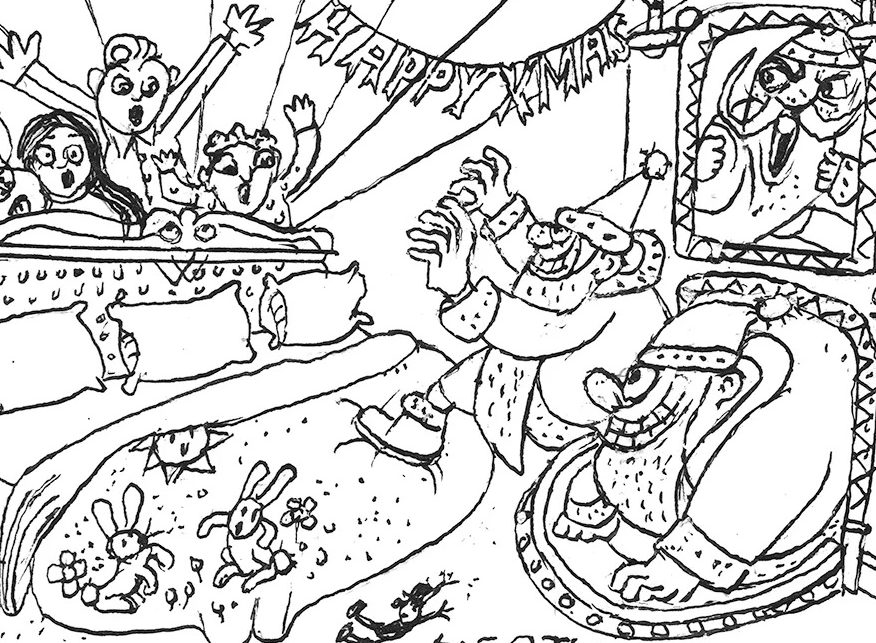Dark Santa
Mary Wellesley at The Spectator

For a heartwarming Christmas tale, look no further than the medieval legend of St. Nicholas — a story of sex-trafficking, cannibalism and murder. The historical Nicholas is a hazy figure whose scant biography was embroidered in the Middle Ages. The twelfth-century Norman poet Wace wrote a colorful account of his life. It opens with the story that has informed the modern Santa Claus. Nicholas, we are told, took pity on a man who had once been wealthy but had fallen into poverty. The man had three daughters. Things were desperate — the man concluded that the girls had to be sold into sexual slavery. Nicholas visited the man’s house on three consecutive nights and each night threw gold in through an open door window.
Some of the other stories in Wace’s poem are decidedly more macabre; many involve the miraculous resurrection of children murdered or accidentally killed. One such is the Miracle of the Boiled Infant, in which a mother is so overjoyed at the news that Nicholas has been selected as the bishop that she rushes to church to hear Mass, leaving her baby in an earthen tub over a burning fire. When the service is over, she suddenly remembers her mistake and rushes home to find the baby unharmed and happily playing with the bubbles in the boiling water.
In another story, a man on a pilgrimage to St. Nicholas is murdered and dismembered by an innkeeper and thrown into vats of salted meat. The man miraculously wakes the next morning and greets the innkeeper, who responds: “Good fellow… I killed you,/ Shattered your bones and salted your flesh./ Saint Nicholas to whom you are going/Is very powerful and full of succor.”





